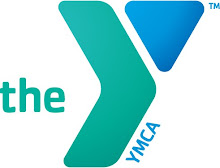 There are graves near Cascade Dam of pioneers who were chasing some Indians from Indian Valley who had stolen some horses.
There are graves near Cascade Dam of pioneers who were chasing some Indians from Indian Valley who had stolen some horses. These horses belonged to a rancher named Bill Monday. Three friends volunteered to help Monday recover these horses; they were Sylvester "Three Finger" Smith, Tom Healy and Jake Grosclose. They followed the trail of the Indians and the horses to the Payette River by Cascade Falls. There they were ambushed by the Indians on August 20, 1878.
All the men were killed except Smith, who after being wounded hid in a beaver dam until the Indians moved on. He stayed hidden for a couple of days before hiking toward Payette Lake, which was 26 miles away. He met up with the mail carrier, who took him on to Meadows Valley, where he could get some medical help.
Word was sent to a U.S. Cavalry unit under the command of Major Drum who were camped about thirteen miles down the Little Weiser River from Meadows. When the soldiers arrived at Cascade Falls, they buried the bodies of the men and marked the graves. They followed the trail to the east and found two miners killed at the Pearsol diggings and also buried them. They then followed the trail into what is now called Scott Valley and turned south following the creek.
They found a lone Indian boy guarding the horses. When the boy saw the soldiers, he took off on his horse to warn the Indian camp near by. The Indians scattered and the soldiers recovered the horses, plus others the Indians had. This is where we get the name of Horsethief Basin. This area today is the site of the Idaho Fish and Game Horsethief Reservoir, a very popular fishing and camping area.
The graves at Cascade were along the river. When the first railroad tracks were built up the valley, the graves were just above the tracks. Later on, when Cascade Dam was built, the railroad’s new grade came close to covering up the site, so a rock retaining wall was built to protect it. The old railroad grade has been changed into a road by Valley County and the grave site is below the road. Above the road is a flag pole and plaque telling the history and names of the pioneers buried here. You have to hike up the hill just a little ways to see the flag pole and plaque mounted on a big boulder.
The graves at Cascade were along the river. When the first railroad tracks were built up the valley, the graves were just above the tracks. Later on, when Cascade Dam was built, the railroad’s new grade came close to covering up the site, so a rock retaining wall was built to protect it. The old railroad grade has been changed into a road by Valley County and the grave site is below the road. Above the road is a flag pole and plaque telling the history and names of the pioneers buried here. You have to hike up the hill just a little ways to see the flag pole and plaque mounted on a big boulder.







Im so proud to work here
ReplyDeleteI don't understand why the white men had to take back their horses PLUS others the "indians" had.
ReplyDelete